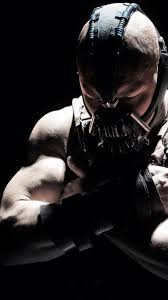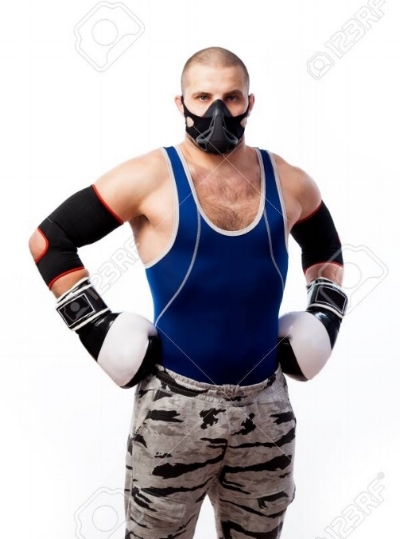
Yes.
No.
Author: Ross Oberlin
Fitness marketing works and damn, does it work really well.
Earlier this week, I was coaching one of our athletes. Smart kid, and one hell of an athlete, currently playing for a D1 Collegiate Football team.
In the process of a conversation about training, we started discussing pieces of equipment that are not useful, and I brought up the Training Mask. He was surprised, and noted that he thought that was a really good piece of equipment and he had actually been considering buying one.
Save your money, bud. (80 bucks!!!)
I’m constantly reminded (although not enough) that because so much of my time is spent in a small circle of high level strength coaches, that I sometimes forget what is marketed to the general population. Many of the coaches I spend time with are busy actually coaching. They’re actually developing high-level athletes. When we’re focused on that, we often don’t have the loudest voice in the social media landscape.
And that’s a big problem. It leaves openings in the landscape for snake oil salesmen.
See, amongst the coaches that I consider peers, not a single one of them that I know of would advise their athletes to use the training mask.
But outside of that circle? It’s a product that has a strong hype machine, complemented by the fact that it makes you look like Bane. And since Bane is a bad ass, wouldn’t wearing these masks help make you a bad ass as well?
In short, no.
Let’s briefly breakdown the many claims made by the training mask, and why they’re not valid.
“Simulates training at altitude” – This USED to be the central claim that the Training Mask made. I don’t think they removed this claim for ethical reasons. I think they had to because this claim is plain false. With that said, their marketing images still impliy this, and there seems to be no effort to correct users of the product who still believe that’s what it does.
Training (but really, living) at altitude puts us into an environment where the change in atmospheric pressure reduces the concentration of oxygen in the air. As a result, our body produces more red blood cells to transport more oxygen to our tissues to make up for, or buffer the lower concentration of oxygen in the air we’re breathing.
Once a person leaves elevation, they retain the increased level of red blood cells for a period of time (possibly for months). The result is having increased endurance levels. Our heart and lungs don’t need to work as hard, because our body is absorbing more oxygen per breath. When you hear about ‘blood doping’, that’s an artificial way of creating this effect by adding blood to our system through an IV.
The reason the Training Mask can’t claim this anymore is because this isn’t what’s happening. All the mask does is reduce the amount of air you’re able to inhale. It doesn’t alter the amount/concentration of oxygen in that air.
“Improves Respiratory Compensation Threshold & Ventilatory Threshold” – Oooooh, big words!
Respiratory Compensation Threshold = This is accepted as the point where ventilation becomes excessive in relation to the amount of CO2 volume. Essentially, we can’t exhale CO2 as fast as we need to. As of the posting of this blog, there is not yet a reliable method for identifying/measuring RCT. And since we can’t yet reliably measure it, no one should be making claims about their ability to influence this marker.
Ventilatory Threshold = This is accepted as the point where ventilation becomes excessive in relation to oxygen volume. Essentially, we can’t inhale oxygen as fast as we need to. This is a more reliable marker to identify and track, but that doesn’t mean the mask improves it.
On the Training Mask website, there’s a single study that is continuously cited for these claims. The study is on PubMed. The abstract as well as the full study contains very specific, technical, and boring language, as any scientific study should. It’s the sort of thing their average consumer wouldn’t be interested in reading. Are objective studies good? Is scientific review important? Of course.
But does that study truly support the claims that it’s being paired with on their website? No. It just doesn’t. The claims on the website are worded in a way where they toe the line, and avoid flat-out lying, but the science just isn’t there.
“Hypoxic Environments stimulate increased Growth Hormone levels” – I love this one. Yes, there is research that suggests training under a hypoxic environment (think: blood flow restriction training) can stimulate a growth hormone response.
But note what they’re NOT claiming. They’re not claiming that their product can create this hypoxic environment. They’re simply hoping that you’ll make the incorrect connection that their product can do that.
“Strengthens Respiratory Muscles” – This is the one claim that might have some actual truth to it. By restricting the volume and rate of air you’re able to inhale, the mask may be able to resist and “strengthen” your diaphragm, intercostals, and other respiratory muscles.
But even if that is true, is it a good thing? Is altering the balance and rhythm within our body and how it functions, especially for respiration – a positive? I’m not so sure.
There’s plenty of good information and research on how to improve your quality of respiration and cardiovascular fitness without a mask on your face. I’d much rather go for the low hanging fruit than drastically alter something that may not even assist me.
“So-and-so famous athlete uses it” – Yep. And they’re paid money to use it – or at least wear it for a photo shoot. And they were a great athlete before they ever wore it. They won the genetic lottery, you didn’t. You will not become them by wearing this mask. Sorry.
This really comes down to a concept that’s so simple when explained, but immediately gets clouded when someone is trying to sell an image and product:
Maximum Effort vs. Maximum Output
What I hope we can all agree on is that wearing a mask that restricts your breathing makes it harder to do physical activities, especially ones under duress or fatigue.
Even under that environment, someone should still be able to give me “Maximum Effort”. If someone struggles with that, I wouldn’t put a mask on them to help get them to that point. I would talk with them to establish goals and motivations to find their “why” to help achieve maximum effort in training.
With maximum effort established, there’s still a bigger piece to the puzzle. If there is any speed or power component to an athlete’s sport, which is almost every sport, what I really need to train is their “Maximum Output”.
Maximum Effort + Maximum Potential = Maximum Output.
Once an athlete is buried by fatigue, stress, and duress, their Maximum Potential is not possible, and no matter how hard they try, they can no longer produce Maximum Output.
Need to see this in a real world example?
Put two athletes on a field, and let’s have them run 20 yard hill sprints with a 90 second rest between sprints. Both athletes are giving me Maximum Effort every sprint. The one wearing a mask however, is unable to fully recover between sprints.
While they’re still giving me max effort, they have dropped off from max potential and are no longer producing max output.
The mask wearing athlete is no longer training Speed. They’re no longer training in an environment that will get them faster. They’re still training at max effort, but by putting on a mask that is driving fatigue, they’re training a different quality than they think they are.
This example can be displayed in both short, acute bouts of training, or longer ones as well. In any instance, the mask will quickly rob you of your maximum potential, and you will be pulled away from getting more high quality, max output reps in.
This is why the training mask is not a useful tool. Understanding the differences between these concepts (effort vs. potential vs. output) should help you to understand why.
Also, this whole thing was predicated on making us look cool like Bane, right?
BANE WEARS HIS MASK TO ADMINISTER VENOM/ANESTHETIC TO NUMB THE BRUTAL PAIN OF HIS PREVIOUS INJURIES! IS THAT THE SAME REASON YOU’RE WEARING ONE!?
If you will die, or be in terrible pain without some sort of mask over your face, then please wear one. If not, maybe you should just train hard, and not require a silly costume to get the job done. The mental game is a big part of training and performance, I get that. Wearing a mask that makes you feel bad ass might help your mental game. But you can’t compete with the mask. If it’s where your confidence was coming from, you’ll feel naked once competition time comes.
Invest in your mental game. Meditate. Visualize. This will do for more for your performance than any mask ever can.




